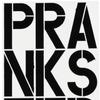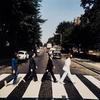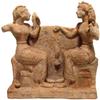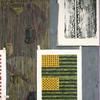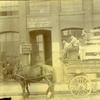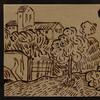Colonial Williamsburg, William & Mary Identify Structure of the 18th-Century Bray School for Enslaved and Free Black Children
- WILLIAMSBURG, Virginia
- /
- February 25, 2021
A small, white building tucked away on the William & Mary campus once housed the Williamsburg Bray School, an 18th-century institution dedicated to the education of enslaved and free Black children, researchers have determined. Now, the university and Colonial Williamsburg are working together to ensure current and future generations learn about the complex history of what is likely the oldest extant building in the United States dedicated to the education of Black children – and the stories of those who were part of it.
The new partnership calls for relocation of the Bray-Digges House to Colonial Williamsburg’s Historic Area, where it would become the 89th original structure restored by the foundation. It also establishes the Williamsburg Bray School Initiative, a joint venture of the university and foundation to use the site as a focal point for research, scholarship and dialogue regarding the complicated story of race, religion and education in Williamsburg and in America.
Dendrochronology analysis of the building’s wood framing in 2020 by Colonial Williamsburg researchers confirms that the structure at 524 Prince George St. once housed Williamsburg’s Bray School, an institution that educated many of the town’s Black children from 1760 to 1774. Suggested for establishment in Williamsburg by Benjamin Franklin, the Bray School’s mission was to impart Christian education to Black children and for students to accept enslavement as divinely ordained.
Virginia Gov. Ralph Northam is scheduled to join the Williamsburg community for a special event at 5 p.m. Thursday commemorating the history of the Bray School, its rediscovery and plans for site and interpretation. Due to COVID-19 guidelines, the event is not open to the general public to attend in person but it will be available virtually via live stream at colonialwilliamsburg.org/brayschool.
“It is hard to overstate the importance of this discovery, of the robust history that will be uncovered through this partnership between William & Mary and Colonial Williamsburg” said William & Mary President Katherine A. Rowe. “So much of our history as a nation has gone unrecorded – the history of African Americans, their oppression, and resistance. By studying the legacy of the Bray School students, we will uncover and illuminate some of the most important impacts of education in the story of America.”
Colonial Williamsburg’s initial work to restore and interpret the Bray School’s historic structure is possible in part thanks to a grant of $400,000 from the Gladys and Franklin Clark Foundation. Cliff Fleet, president and CEO of Colonial Williamsburg, said the project is a critical step toward fostering a broader understanding of Americans’ shared history. The grant from the Clark Foundation will allow Colonial Williamsburg to relocate the structure to the Historic Area, and additional funds will be raised to complete the restoration and interpretive work.
“Colonial Williamsburg and William & Mary’s partnership to research, restore and interpret the original structure of the Bray School is critical to our ongoing work to uncover our common past and expand our understanding of America’s founding,” Fleet said. “We’re very grateful to the Clark Foundation, whose generous support makes this effort possible. We invite guests, the community and the nation to join us as we continue to pursue and present a more complete story of all who lived in Williamsburg during the Revolutionary era.”
A Virginia Department of Historic Resources marker commemorating the school’s 18th-century location was unveiled at Brown Hall, a William & Mary residence hall, in early 2019, and Rowe noted that the new joint venture aligns with other William & Mary initiatives that address the institution’s historical involvement with slavery. Construction is to begin this year on Hearth: Memorial to the Enslaved, a monument dedicated to the enslaved individuals who labored at William & Mary, while the Lemon Project is a scholarly and educational initiative that investigates slavery and its legacies— and particularly William & Mary’s involvement in the practice. The Lemon Project takes its name from Lemon, an enslaved worker at William & Mary.
Jody Allen, the Robert Francis Engs Director of the Lemon Project, explained that the Bray School legacy has long been a part of the Lemon Project’s programming. Identification and engagement of descendants of Bray School scholars are among the priorities of the Williamsburg Bray School Initiative. Allen was recently appointed by Gov. Ralph Northam to Virginia’s Commission to Study Slavery and Subsequent De Jure and De Facto Racial and Economic Discrimination. She said she expects the Bray School Initiative to allow scholars to follow more closely the intriguing line of evidence of a Bray School education having influence that is deep and wide among Williamsburg’s Black population.
“When we talk about the history of slavery and the history of the African American experience at William & Mary, we include the Bray School,” Allen said. “We believe the Bray School not only impacted the children who actually attended the school, but it impacted their descendants. We believe very strongly that they went on to share their knowledge with brothers, sisters, neighbors.”
William & Mary and Colonial Williamsburg are both neighbors, and frequent collaborators. The Bray School has been the object of numerous research initiatives focusing on archival as well as material-culture sources aimed at expanding the collective understanding of history, including the joint archaeological excavation of the historic Bray-Digges House site at Prince George and Boundary streets. Currently, the university and foundation are partners in work led by the city’s Historic First Baptist Church to research and interpret its first permanent site on South Nassau Street. The Bray School partnership will facilitate continued research and interpretation, and a deeper examination of a number of aspects of history through the lens of the Bray School, including perspectives from families whose children attended the school and the motivations of white slaveowners who sent them there.
“Our knowledge of history is not static; it continues to reveal itself through critical work like the investigation of the Bray-Digges House,” said Stephen Seals, a Colonial Williamsburg interpreter, program development manager and community liaison. “The Bray School represents another complex chapter in our nation’s story, and its restoration and interpretation will be critical to our community’s work to foster a more complete understanding of our shared history.”
Nicole Brown, an actor-interpreter and scholar who portrays Colonial Williamsburg Nation Builder Ann Wager, the white teacher at the Williamsburg Bray School, is also a graduate student in William & Mary’s American Studies Program. Currently, Brown is studying the history and impact of the Bray Schools in Williamsburg and beyond. Her work has taken her to Oxford’s Weston Library, where she dove into some 8,000 pages of records of the Associates of Dr. Bray, the London organization that established or tried to establish Bray Schools throughout the New World in Philadelphia, Nova Scotia and the Bahamas. Brown’s work with Colonial Williamsburg is supported by the Mary and Donald Gonzales Field Experience Fund.
“This research gave me a great deal of insight into Ann Wager and her students. You can learn a great deal about the school based on the books she used at the school,” Brown said. “Quite frankly, you learn a lot about the pro-slavery ideology of the school when you see how many of the books are extremely rooted in systemic racism.”
Julie Richter, a lecturer in William & Mary’s Department of History and the director of the National Institute of American History & Democracy (NIAHD), itself a partnership of William & Mary and Colonial Williamsburg, said there are surviving student lists from only three years: 1762, 1765 and 1769.
“I’m eternally optimistic that there will be a few more lists that someone will find in time,” Richter said. “But right now, we have these three slices in time to try to tease out what students were at the school and who sent them.”
Brown and Richter said slaveowners had varied motivations for enrolling enslaved children. Literacy and math skill increased the auction value of any enslaved individual, while Brown pointed out that a Bray School education increased a person’s usefulness to the slaveowner, in particular one who operated a commercial establishment. Students likely also had varying intentions for use of their education, often in direct contradiction with their owners’, Brown noted.
The first dots establishing the Bray-Digges link were unearthed and connected by Terry Meyers, Chancellor Professor of English, Emeritus, at William & Mary. Meyers was reading a memoir by a local resident when he came across a reference to an 18th-century cottage that in 1930 had been moved down Prince George Street from the corner of Prince George and North Boundary streets. He visited Colonial Williamsburg’s John D. Rockefeller Jr. Library, where there was a file on the building.
“From that, I was able to go back and look at what is now 524 Prince George St.,” Meyers said. “And I realized that if you look at that structure and erase the two additions on the right and the left and change the roofline from a Dutch colonial roof to a proper cottage roof, you actually do have an 18th-century cottage.”
Researchers led by Matt Webster, Colonial Williamsburg’s executive director of architectural preservation and research, discovered the reconfigured roof line that Meyers had noticed and a window sash that dates to the original construction date.
“Our analysis of the structure’s oldest elements conclusively places the timber’s harvest between the winter of 1759-60 and the spring of 1760, with the establishment of the Williamsburg Bray School in 1760,” Webster said. “That, combined with existing evidence of the Bray School’s historical location on Prince George Street, makes a compelling case that this is the original structure, and the building still has a great deal more to teach us.”
Meyers found that the Bray School operated in the Digges building from its 1760 founding until 1765, when the school was moved, possibly out to Capitol Landing Road.
Meyers noted that “education is almost invariably subversive.” Like Allen, he said there is evidence that students at the Bray School took their literacy skills back home and spread them around.
“If you are taught to read the Bible,” Meyers said. “you will be able to read other things. Once you educate people, they are better equipped to think critically.”
The timeframe for relocation of the Bray-Digges building is yet to be determined, and Colonial Williamsburg and William & Mary are considering a number of potential sites. The building most recently housed offices for William & Mary’s Department of Military Science and has been known as Prince George House.


100x100_n.jpg)
